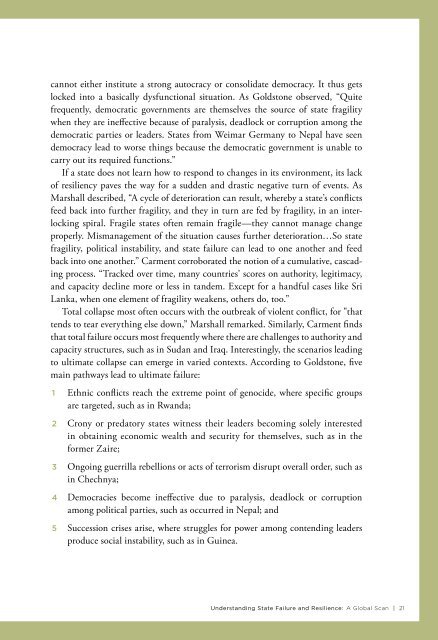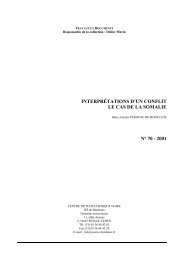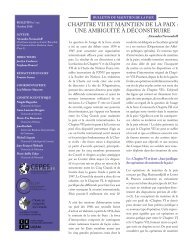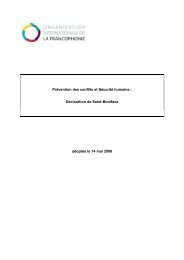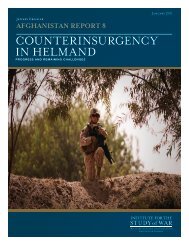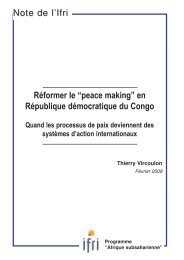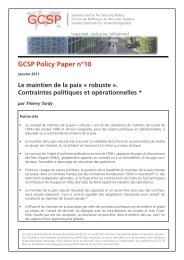engaging fragile states - Woodrow Wilson International Center for ...
engaging fragile states - Woodrow Wilson International Center for ...
engaging fragile states - Woodrow Wilson International Center for ...
You also want an ePaper? Increase the reach of your titles
YUMPU automatically turns print PDFs into web optimized ePapers that Google loves.
cannot either institute a strong autocracy or consolidate democracy. It thus gets<br />
locked into a basically dysfunctional situation. As Goldstone observed, “Quite<br />
frequently, democratic governments are themselves the source of state fragility<br />
when they are ineffective because of paralysis, deadlock or corruption among the<br />
democratic parties or leaders. States from Weimar Germany to Nepal have seen<br />
democracy lead to worse things because the democratic government is unable to<br />
carry out its required functions.”<br />
If a state does not learn how to respond to changes in its environment, its lack<br />
of resiliency paves the way <strong>for</strong> a sudden and drastic negative turn of events. As<br />
Marshall described, “A cycle of deterioration can result, whereby a state’s conflicts<br />
feed back into further fragility, and they in turn are fed by fragility, in an interlocking<br />
spiral. Fragile <strong>states</strong> often remain <strong>fragile</strong>—they cannot manage change<br />
properly. Mismanagement of the situation causes further deterioration…So state<br />
fragility, political instability, and state failure can lead to one another and feed<br />
back into one another.” Carment corroborated the notion of a cumulative, cascading<br />
process. “Tracked over time, many countries’ scores on authority, legitimacy,<br />
and capacity decline more or less in tandem. Except <strong>for</strong> a handful cases like Sri<br />
Lanka, when one element of fragility weakens, others do, too.”<br />
Total collapse most often occurs with the outbreak of violent conflict, <strong>for</strong> "that<br />
tends to tear everything else down,” Marshall remarked. Similarly, Carment finds<br />
that total failure occurs most frequently where there are challenges to authority and<br />
capacity structures, such as in Sudan and Iraq. Interestingly, the scenarios leading<br />
to ultimate collapse can emerge in varied contexts. According to Goldstone, five<br />
main pathways lead to ultimate failure:<br />
1 Ethnic conflicts reach the extreme point of genocide, where specific groups<br />
are targeted, such as in Rwanda;<br />
2 Crony or predatory <strong>states</strong> witness their leaders becoming solely interested<br />
in obtaining economic wealth and security <strong>for</strong> themselves, such as in the<br />
<strong>for</strong>mer Zaire;<br />
3 Ongoing guerrilla rebellions or acts of terrorism disrupt overall order, such as<br />
in Chechnya;<br />
4 Democracies become ineffective due to paralysis, deadlock or corruption<br />
among political parties, such as occurred in Nepal; and<br />
5 Succession crises arise, where struggles <strong>for</strong> power among contending leaders<br />
produce social instability, such as in Guinea.<br />
Understanding State Failure and Resilience: A Global Scan | 21


